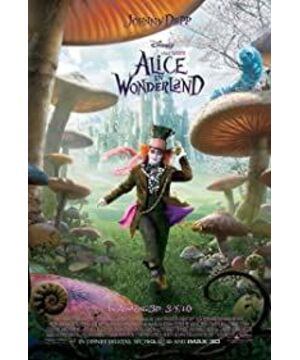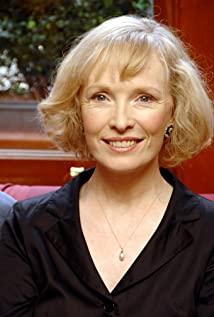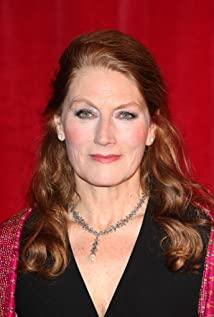Sixty years later, Disney handed over the guide to the genius director Tim Burton, and invited the classic fairy tale "Alice in Wonderland" (1865) by the British writer Lewis Carroll back to the university. screen. Carroll imitates the childish language in the little girl's spiritual world, and what is buried is the ambition of satirizing reality, subverting logic, and de-moralizing. Burton has been on the fringe of the mainstream for many years and is good at creating bloody adult fairy tales in dark Gothic style. The warmth of his alternative fairy tales is bleak and strange, but innocent and sincere.
The spiritual worlds of these two authors are all crushed by the gears of big industry and merged into the torrent of Disney's vulgar and vulgar stories about big clichés.
The 2010 edition of "Alice in Wonderland" is not so much an adaptation of the original, as it is a continuation. It's not so much about writing a continuation, it's more about using a shell and talking to yourself.
Burton’s Alice is twenty years old. A boring aristocratic young man asked her to marry him in the eyes of everyone’s expectations. In order to escape the reality, she fell into the world with the little white rabbit with the pocket watch again, and encountered the three original works. Moon Rabbit, Mad Hatter, Dormouse, Cheshire Cat, Caterpillar, and the Ding Ding Dong Dong brothers, Tiger Lily Flower and White Queen in the sequel "Alice in the Mirror" (1872). Old friends are eager to confirm if she is the Alice they used to be. But Alice didn't remember them at all. At one point, they had to feel frustrated that she was not.
Everyone is waiting for Alice, not only because of the love in the past, the queen of hearts is still ruling the underground world, beheading people at every turn. The "Oracle" that can predict the future of the fairyland records that Alice will slay the dragon on "Fabi Oh Day" and overthrow the Queen of Hearts.
Here, the film merges the red queen of chess from the book into the original poker queen of hearts. The white queen becomes her sister. After she ascended the throne, she hibernates and waits for an opportunity to seize her throne. "Fabi Oh Day" was originally the day when the red and white armies battled out on the chessboard in the book. This chess battle evolved into a chess battle against poker in the movie.
The proposition of the battle between justice and evil in the film is deliberately discarded by the original book.
The queen of red and white has no distinction between good and evil; the queen of hearts keeps ordering to "cut his head", but no one really died because of it. "You are just a piece of poker", Alice in the book understands. If we look at the original with moral glasses, our protagonist is by no means kind. The Duchess asked her to take care of the little baby. She thought the baby was tossing herself, and said to it: "My dear, you become a pig, I don't care about you." The baby really turned into a pig and ran away.
"We are all crazy here," said the Cheshire Cat in the book while showing Alice the way. "You must be crazy, otherwise you won't come here." The "crazy" in the original book is not the little character that Disney likes to play with, nor is it the signature gothic style of Johnny Depp who plays the Mad Hatter, nor the extraordinary courage of Alice to slay the dragon, but the character's logic and reality. The betrayal of the rules.
Many translations translate "Wonderland" in the title of the book into "Wonderland", which is not unreasonable. Under the rabbit hole, it is not a "wonderland" that leads the soul to ascend, but a disorderly "anti-world" without good and evil. The meaning of the world in the mirror is the same.
Alice could not keep up with the chaotic logic of "anti-world". She warned others everywhere, shouting "You should be ashamed". She was not understood everywhere, and struggling everywhere: she asked the frog-faced servant how to enter the Duchess's house, the latter said It depends on whether you need to go in; the sad fake turtle tells a lot of stories, but it's totally out of touch with sadness. The most symbolic scene was the croquet match in the Queen’s Garden, where order was vanquished and everyone fought in a mess. In the underground, Alice also assimilated, and the English grammar was messed up during the conversation, and the multiplication formula was not memorized, and even she was confused as to who she was.
In addition to character descriptions, Carroll also deepens the subversion of order into language and logic. For example, Alice, who has grown tall, said to herself, "I will write a book when I grow up, but I have grown up." At this time, the former "grow up" refers to the increase in age, and the latter refers to the height of the body. Poor Alice couldn't distinguish the two meanings and fell into logical confusion. The word games, number games and anagrams in the book are even more numerous.
Corresponding to the "anti-world" is the Victorian era in which the author lived-on the surface, religious precepts and clear rules and precepts dominate everything, and undercurrents surging in private give birth to another possibility. Many commentators point out the correspondence between the underground world and reality. The tear pool party specifically refers to the author and several of his friends. The Queen of Hearts is generally considered to be a joke on Queen Victoria; the little white rabbit is a cautious, busy citizen; every Nothing has to say that the duchess is a vulgar moral preacher.
Does Alice's journey into wonderland look for other possibilities in the absurdity, or expose the absurdity hidden under the cloak of reality and logic? This is another puzzle Carroll left us.
The film reshapes a story that is far from good and evil and abandons sensibility into an old heroic growth legend: the seemingly ordinary protagonist is identified by the onlookers as a hero who saves the destiny of others. He is in the recognition and doubt of people Slowly prove his identity, remove the ultimate opponent, complete his destiny, realize his self-worth, and become the legendary one.
This archetype story is a motif in Western culture. In "Song of Nibelungen", the young blacksmith Siegfried didn't know that he was actually the heir of an occupied kingdom. After killing the dragon that endangered the world, he got the treasure and the love of people.
In the film industry with Hollywood as its core, the Dragon Slaying motif is the most logical, orderly and stylized story frame. This is true of "A Westward Journey", "The Matrix" is true, and "Harry Potter" is also true. Under the banner of Disney, Burton went through this cliché process in order, and integrated a little bit of self-produced black warmth into Disney's "family carnival" warmth, packaged and sold, and did not provide any new aesthetic experience in the end. It can even be said that he lost his strengths and went to the opposite side of Carroll.
In ancient Northern Europe, the original meaning of "Niebelungen" was "the country of mist" and "the country of the dead", which was a secret underground world. It's not so much that Disney and Burton's Alice traveled through wonderland, not so much Nibelungen.
Published in "Art Newspaper" (2010.4.30)
View more about Alice in Wonderland reviews











